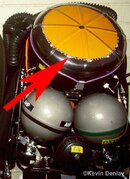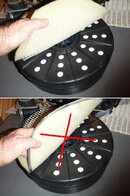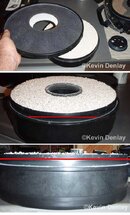I have not, but I'd certainly be interested in learning more if there is a link with any of the details.
Pardon delay in reply. I don't think the photos or intricate details were ever published on a web site, although I could be wrong on that. However, because I was an instructor / instructor trainer on the same kind of rig (a 'Biomarine' Mk15.5) I was sent some of the photos by one of the people, a friend of mine, who helped authorities 'investigate' his rig post dive. Unfortunately I now no longer have them as that was in a galaxy far far away and a long time ago (or so it seems now anyway).

But, at the risk of hijacking this thread (and on that note, IIRC there used to be a thread on the accident, but I cant locate it.
If a MOD should care to, then may I suggest they move the relevant posts from this thread there?
Or not.
Whatever.) I'll post some of the photos I made up to illustrate the point to students, etc.
With that said, Dave’s dive was ‘big’ enough to begin with, without making it bigger / harder that necessary. How did he, or someone do that? Well by;
1) No plastic spacer / top yellow foam was right on gas flow holes. That is, he left the white ‘plastic’ spacer out (red arrow points toward it in photo of the 15.5 below, and photo below that shows the wrong way – red cross - and the right way to assemble top pad for 15.5 scrubber) so that the foam pressed directly down on the gas flow holes, hence increasing WOB. Strike 1.
2) The scrubber was not filled properly to the rim as it should be in a 15.5, that is there was about a ¼ inch / 7mm gap down from the rim to where the top of his sorb was (see red line in bottom set of images). He then placed the grey foam insert in there. But the 15.5 scrubber is meant to be filled all the way to the very rim, and the gray foam insert should sit on top of that (or more factually, placed in the lid, and the lid screwed down on top of the sorb). Then when the canister lid is screwed down that foam compresses to help hold the sorb in place. (See top image photo at bottom). How he had it, it did not compress down onto the sorb, so increased the possibility for breakthrough. Strike 2.
Now the above are
facts, as is the first sentence below, the rest is my opinion from personal experience.

3) He used the small grain / granular sorb (photos below show large grain sorb). Now while this may(?) have a longer duration dive life than the larger grain sorb, and supposedly extracts C02 slightly better, it adds to the WOB also in this rig (as I can testify), so IMO he would have been better off on a dive like this to go - given that gas density had to be considered - with the larger grain sorb, (as I, and others on 15.5’s regularly got 12 hours from a fill, so still fine for his dive, IIRC). Strike 3.
So, as you can probably envisage, all the above increased his WOB / worked against him, which added to the gas density issue could have…………………………...well, like I said, a big dive just got bigger / harder.







